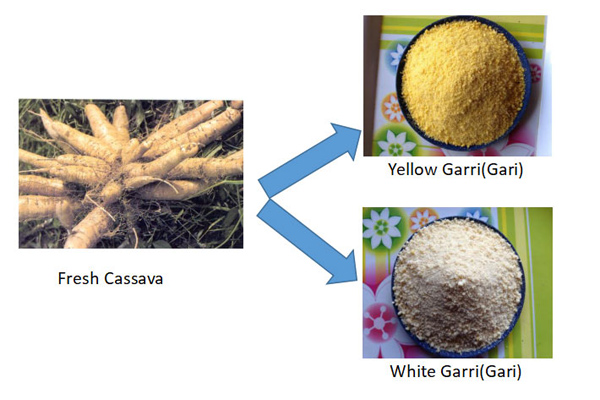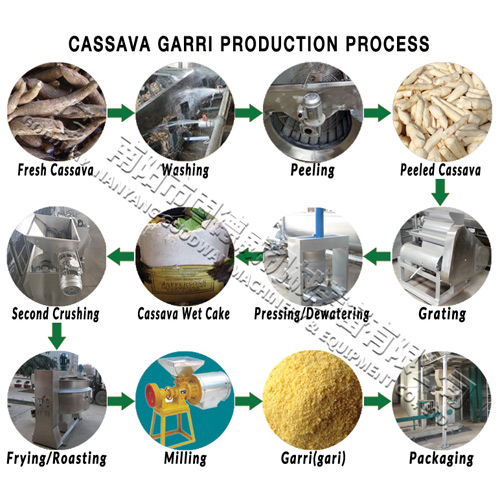Garri, which is made by fermenting and roasting cassava root, is one of the staple foods in West African cuisine. Also known as gari, garry, tapioca, garium sulphate, farofa, and poi, this fermented food is available in fine, medium and coarse grain forms, and in white and yellow colors. The texture comes from how the root is ground and sieved, and the color comes from the addition of palm oil; the palm oil version is generally more in demand. Cassava tubers could be processed into garri.
During
garri processing, the cassava roots are cleaned, peeled and soaked in water for several hours. The soaked roots are then dried and grated; they were grated by hand, now there are machines to grate the cassava roots. The root shavings are stuffed into porous jute bags and pressed under heavy weights for three to seven days until the moisture and starch has completely drained away and the shavings have fermented. Cassava is high in cyanide and the fermentation process reduces that. The root shavings are then sieved and spread out on a sheet in the sun and allowed to dry.
The dried cassava shavings are then either dry roasted or fried by
garri fryer with a little palm oil. The palm oil gives color as well as flavor to the shavings, and is also useful in further lowering the cyanide content in the cassava. The roasted garri is stored and used as required.
Garri can be served in different ways for different meals. It may be eaten as it is in its roasted or fried form, it may be mixed with cold water, or it may be served with milk and sugar or honey. The dried shavings can be ground into a fine flour, which is often mixed with hot water to form a porridge called eba or utara. The flour can also be used as a soup thickener and to make a vegetable stew called foto garri. It is also used to make a bean stew called yor ke garri, and a bean cake called akara.
Many people in Africa and around the world eat garri on an everyday basis. It is rich in starch and has high fiber content, proteins and vitamins. As it is also often cooked with vegetables, bananas, coconut, peanuts, cashew nuts, fish and meat, it can make for a quite excellent and healthy dish.

 EN
EN
 fr
fr  es
es  it
it  pt
pt 









